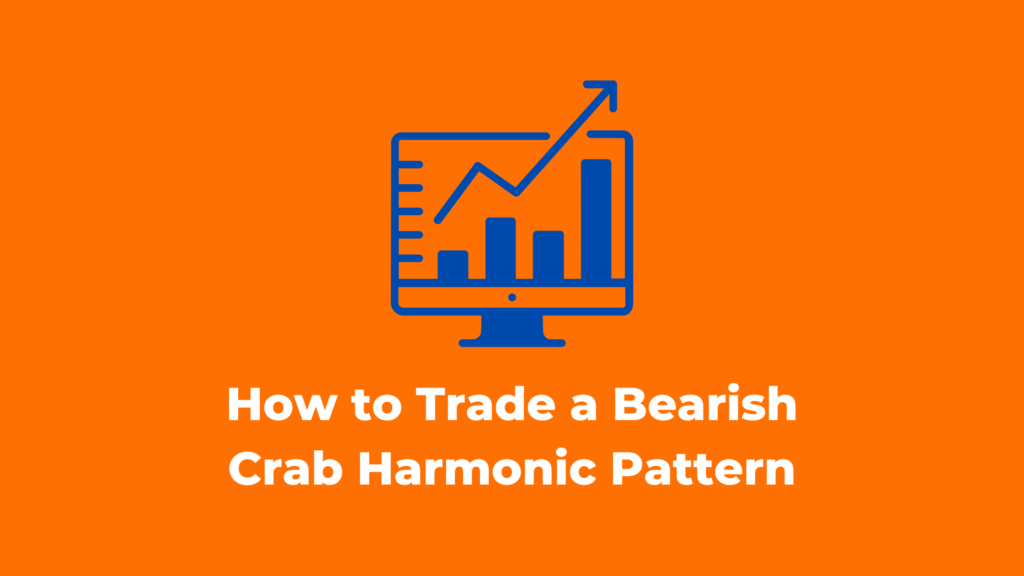If you’re looking to take advantage of one of the most successful trading strategies out there, the bearish harmonic crab pattern is a great way to do it. This pattern relies on the key ratios of Fibonacci numbers to be precise, but you don’t have to know every angle of the pattern in order to explore it successfully. Technology can make the process much easier for those who are relatively new to trading, as there are indicators that can scan for and pick up any opportunities for you. Here, you’ll learn how to best approach trading with the bearish crab harmonic strategy.
What is a Bearish Crab Harmonic pattern?
First, a bearish crab pattern takes a letter W formation.
It’s a bearish reversal pattern.
Meaning price action predicts a fall in prices into future timeframes.
So watch out.
A bearish crab pattern showing after a dominant bullish trend indicates that prices may fall lower in later timeframes.
How Does a Bearish Crab Pattern Form?
A bearish crab pattern forms with five clear swings in prices.
Note that harmonic trading patterns have conventional naming.
So for a bearish crab, the following movements apply:
- Prices make a downswing. It marks a bearish impulse from X to A. You can call it the leg XA.
- Next, prices bounce from points A to B.
It’s a retracement of the move XA.
And the prices retrace within limits of 38.2% and up to 61.8%.
- The third move marks the swing to C.
It marks swing BC. And the leg BC runs from between 38.2 to 88.6% of the swing leg AB.
One key point is that point C does not hit prices lower than point A.
- Prices make a reversal. And mark leg or swing CD.
Swing CD is the longest within a crab pattern formation. It makes a reversal from 161.8% of swing XA.
However, it may make extreme reversals. It may reverse as far as 224.0% or 361.8% extensions of swing BC.
Once point D forms, it validates the formation of a bearish crab. And appropriate short positions can be taken.
Pro-Tip: The above rules show step by step formation of a bearish crab pattern.
While price action anticipates a price fall from point D, it’s not a 100% guarantee.
Prices can break the anticipation. So, never jump in without a well-set stop-loss position.
In addition, the XABCD pattern tool helps traders check if price swings correspond to a crab pattern. A clear bearish crab pattern must have the extensions and retracements corresponding to the ones above.
How to trade the Bearish Crab Pattern?
Trading a bearish Crab pattern requires traders to go short or sell.
You sell after locating point D.
Otherwise known as the order point in harmonic patterns.
So…
You place an order at point D.
Next, set a stop loss above point D.
Take profit position below D.
Usually, there are two ways to approach taking profit positions with the bearish crab pattern.
One is the conservative approach. Where you pick a price not lower than point B in the pattern formation.
With the conservative profit targeting, you expect some good profits in case prices drop to the range of point B.
And second is the aggressive approach to profit-taking with a bearish crab pattern.
Here, you expect the prices to drop all the way to the price regions of point A. Point A is the first reversal of the first impulse or wave in prices.
Please see the chart above to see how best to set the take-profit positions. First is the conservative approach at the level marked 3.
And follows the aggressive approach with tale profit at the price level marked with 4
Pros and Cons of Trading the Bearish Crab
Here, I’ll share the Advantages and the Disadvantages after.
First, the bearish crab has a high level of accuracy as a chart pattern.
So for a patient trader, this pattern can help bank profits – even for a new trader.
The second point is the bearish crab pattern has an Excellent risk reward ratio.
Meaning for every dollar you risk in a position, you get equally high returns. And that if the price does not move against you.
Another great advantage of the bearish crab is the well-defined levels of taking a profit.
Clear levels help new traders to have an easy time with what to expect while trading the pattern.
Disadvantages of Bearish Crab patterns
It can be very complicated for beginner traders.
Bearish crabs and other patterns are usually not easy to spot on price charts.
They require an expert trader to locate. Still, the experts need to know very specific points of entry and exit. And yet, markets have chances of moving against them at times.
One more con with bearish crab patterns is the challenge of stopping hunting.
Stop hunting is where brokers and market movers ensure prices hit to wipe out stop loss positions. It’s a challenging task for a new trader to know exactly how and where to place a stop-loss position.
FAQs on Trading the Bearish Crab Patterns
What is a Deep Crab Harmonic Pattern?
A deep crab harmonic is a slight variation of the normal crab pattern.
Deep crabs still retain the letter W formation.
However, there are key points that set the deep crab apart.
- One, the AB leg is equal to the CD leg. Both are at 0.886%
And the XA leg extends to 1.618%
- Lastly, the BD leg extends to between 2 to 3.618%
The potential reversal zone or PRZ is slightly past the 1.618% extension of XA.
How different is a Bearish Crab Pattern from a Butterfly pattern?
Both retain the letter W formation.
The differences come in with the extensions of the legs.
For a Crab, XD leg is at 1.618%. While for a Butterfly, XD is 1.27%
Also, BD for a Crab is 2.24%. While for the butterfly, it is 1.618%
So, whether a crab or a butterfly, the rules of entry hold.
And specifically, the rules must have your stop loss, entry, and exit price points.
How Can I Accurately Spot a Bearish Harmonic Pattern?
Trading harmonics is a good approach to profitable strategies.
For beginners, grasping the formulas can be challenging.
But you can improve your skills with frequent practice. It’s great if you start out with dummy accounts.
There’s an easier approach to spotting harmonic pattern formations. And it comes with technology.
Traders can use a harmonic scanner – an indicator that helps spot the key harmonic patterns – bearish crabs inclusive.
Once the scanner picks the formations, it’s up to the trader to consider whether or not to open positions.
For a few bucks, you can get a harmonic scanner indicator. One site that sells the indicator is the indicatorvault.com
So with the scanner, the heavy weight lifting is already done for you.
Conclusion on Bearish Crab Harmonic Pattern Trading
We have seen what a bearish crab pattern is.
And the signal it gives whenever it shows up after dormant uptrends.
You can locate a crab harmonic pattern by using the AXBCD pattern tool.
However, traders with the concept of trading the bearish crab can rely on the harmonic scanner.
A bearish crab pattern trading strategy comes with advantages – it can be a great help for newbies.
But pattern trading is not adequate. Traders need more skills. Good risk and money management are among the key skills.
There is a specific note regarding the special pattern – the deep crab pattern. And the special notes regarding its information.

James is a finance writer, and content marketing specialist. He often writes about Forex, Crypto-Assets, Blockchain, and Information Technology.


